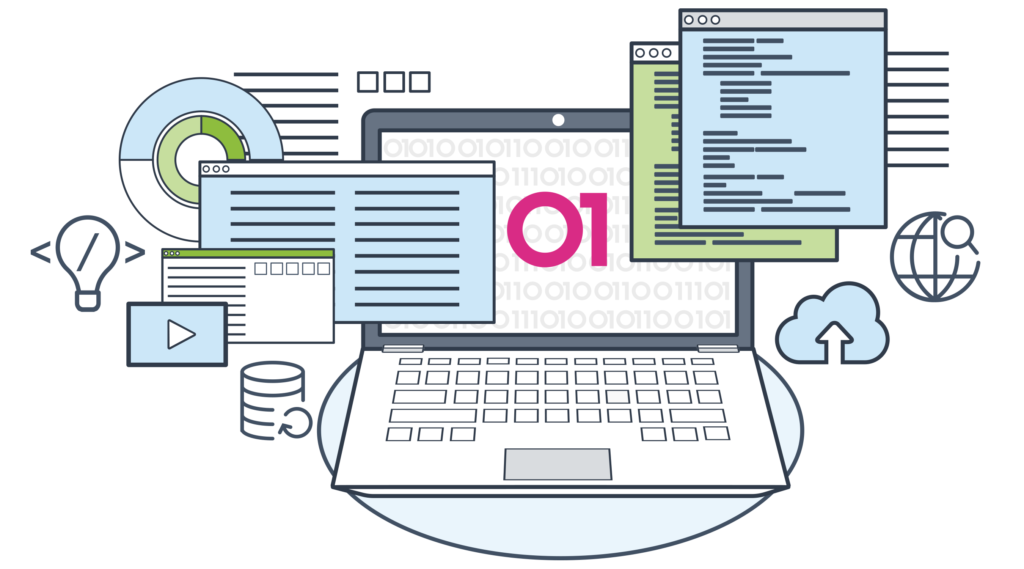Contents
So you want to know more about the software development life cycle?
In this blog post, we will discuss what it is, its different phases, and process.
We will also highlight some key concepts that are important in understanding.
So, let’s get started!
What is the Software Development Life Cycle (SDLC)?
The software development life cycle (SDLC) is a process that software developers use to create and maintain high-quality software.
The SDLC includes stages such as planning and requirement gathering, design, development, testing and quality assurance, deployment, and maintenance.
Each stage has its own set of activities that need to be completed before moving on to the next stage.
Why is the Software Development Life Cycle Important?
The SDLC is important because it helps businesses to create high-quality software applications that meet the needs of their customers.
The SDLC also helps businesses to avoid costly mistakes during the software development process.
The Stages Of The Software Development Life Cycle
There are six main stages in the software development life cycle: planning and requirement gathering, design, development, testing and quality assurance, deployment, and maintenance.
1. Planning and Requirement Gathering
The first stage of the SDLC is planning and requirement gathering.
In this phase, businesses gather information about the needs of their customers and the goals of their software application.
This information is used to create a requirements document, which is a detailed description of the features and functionality of the software application.
2. Design
In the design phase, businesses create a detailed plan for how their software application will be built.
This plan includes information about the architecture of the application, the data structures that will be used, and the algorithms that will be implemented.
3. Development
The third stage of the SDLC is development. In this phase, businesses write the code for their software application according to the design plan created in the previous stage.
This code is typically written in a high-level programming language such as Java or Python.
4. Testing and Quality Assurance
The fourth stage of the SDLC is testing and quality assurance. In this stage, businesses test their software application to ensure that it meets the requirements specified in the requirements document.
This testing can be done manually or automatically using tools such as JUnit or Selenium.
5. Deployment
The fifth stage of the SDLC is deployment. In this stage, businesses deploy their software application to a production environment where it can be used by end users.
This deployment can be done manually or automatically using tools such as Puppet or Chef.
6. Maintenance
The sixth and final stage of the SDLC is maintenance. In this stage, businesses perform tasks such as patching security vulnerabilities, adding new features, and fixing bugs.
This maintenance can be done manually or automatically using tools such as Ansible or SaltStack.
Types of Software Development Processes
There are several different types of software development processes that organizations can choose from.
The most popular ones are agile & scrum, incremental development, iterative development, V-shaped planning, spiral planning, and waterfall.
1. Agile & Scrum
Agile is a type of incremental process where requirements and solutions evolve through collaboration between self-organizing cross-functional teams.
Scrum is a type of agile process that emphasizes iterative development, team collaboration, customer feedback, and flexible planning.
2. Incremental Development
At its core, incremental development is all about taking small steps toward a larger goal.
This iterative process allows developers to add functionality in stages, evaluating each step along the way and adapting as needed.
By breaking complex projects down into manageable pieces, incremental development makes it easier to manage time, resources, and risk when building a product or service.
3. Iterative Development
In this process, functionality is added in carefully planned cycles, allowing for constant improvement and refinement as the project moves forward.
This approach has many benefits, including more efficient use of resources and quicker identification of errors or issues.
It also allows for greater collaboration between different team members, with each iteration providing an opportunity to incorporate input from developers, designers, or other stakeholders.
Ultimately, iterative development allows teams to create higher-quality products in a more efficient manner, making it an essential tool for anyone working in software or product development.
4. V-shaped Planning
V-shaped planning is a popular waterfall model for software engineering that focuses on the verification and validation of each stage of the process.
Under this approach, designers, developers, and testers collaborate closely throughout the entire development cycle to ensure that each piece of software meets requirements and is free from defects.
This ensures product quality as well as timely delivery, since many mistakes can be caught at an early stage rather than later on in the cycle.
5. Spiral Planning
Spiral planning is a popular method of project management and software engineering that incorporates risk analysis and mitigation into every stage of the process.
At its core, spiral planning involves taking a step back at each stage of a project to assess whether or not it is moving in the right direction.
This helps to identify potential problems or risks early on, giving teams time to respond and adjust course as needed.
6. Waterfall
Waterfall is a type of linear process where each stage must be completed before moving on to the next stage.
This can be thought of as “getting all your ducks in a row” before starting to code or build anything.
Waterfall works well for small projects with well-defined requirements, but can be inflexible when requirements change or are not fully known upfront.
Which SDLC Model Is The Right For You?
The answer to this question depends on many factors, including the size and scope of your project, your team’s experience level, the nature of your product or service, and your customer’s needs.
If you’re not sure which model to choose, we recommend starting with an agile or iterative approach; these models are more flexible and can accommodate changes more easily than waterfall processes can.
Conclusion
The software development life cycle is a process that describes the stages of a software development project, from planning and requirements gathering to testing and maintenance.
There are several different types of SDLC models, each with its own benefits and drawbacks; in this guide, we introduced you to the most popular ones and helped you determine which one might be right for your next project.
Ultimately, the best way to choose an SDLC model for your project is by taking into consideration all relevant factors such as size and scope, development team experience level, product or service nature, customer needs, etc., then deciding which approach will work best given those constraints.





More Stories
cuny chalkboard baruch login
UPSC 2022 Exam Date Calendar
How to Access MDC Blackboard Login Portal